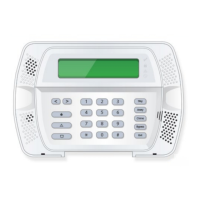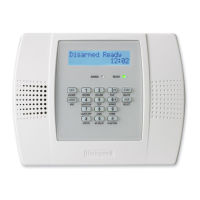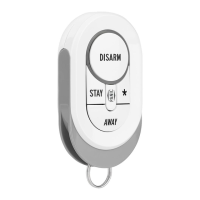Section 5 - Gateways
5-13
SIM Gateway
The SIM gateway is used to interface SIM (Sensor Interface Module) sensors with the FOCUS 200
PLUS system. The SIM gateway can accommodate up to 72 points.
The sensor types employed on the SIM gateway can be divided into two categories:
•
Sensors that have been uniquely manufactured with a built-in SIM.
•
Standard sensors, which require connection to a separate SIM in order to be connected to the
gateway.
The SIM gateway quad trunk consists of four wires. Two wires are used for power (+ 12V and ground).
The other two wires are used in a multiplexed arrangement to serve a dual function. During one half-
cycle, the wires are used for communication with the gateway; during the next half-cycle, they provide
limited + 12V operating power.
Sensor Interface Module (SIM)
An SIM is either connected to a sensor or has a built-in sensor (SIM sensor). SIMs with external
sensors, that require 12VDC power are wired to all four wires of the gateway trunk cable. SIMs with
built-in sensors are wired to a two conductor cable, which is wired to the blue and yellow wires of the
trunk cable. A open in the blue and yellow wires of the trunk cable or in the branch cable will be sensed
as a comm fail condition.
Each SIM and SIM sensor comes with a label containing the Hard ID number as well as information
that identifies the manufacturer and gives the date of manufacture. The Hard ID number is used to
identify the SIM or SIM sensor to its gateway, and is linked to a system point number during the
programming of the point.
Sensors with a built-in SIM:
•
Have been designed for the multiplexed operation.
•
Require only a 2-wire connection to the quad trunk.
•
Are appreciably smaller than a separate SIM, permitting them to be housed in devices as small as
contacts.
The SIM connected to a sensor is:
•
A small circuit board, protected by shrink tubing, with four input wires and six output wires.
•
Housed either in the device with which it is being used or in a separately ordered 370320(7032)
Junction Box.
•
A low-current device drawing less than 1mA.
•
Powered from the + 12V wires of the gateway quad trunk, if system power is required.
•
Capable of being used in a manner similar to a COPID by programming its point to function as an
output point. When activated, it will provide a + 12V output to operate a relay, LED, etc. Unlike a
COPID, a SIM output is supervised because it is interrogated by its SIM gateway.
SIM Gateway Physical Description
The gateway consists of a printed wiring board that is installed in a separately ordered Micro-PID
Housing Unit see
Figure 5-6.
The following important items on the board are:
Item Purpose
Terminal Strip TB1 Makes connections to the RS-485 bus.
Terminal Strip TB2 Makes connections to the Gateway Trunk.
RS-485 Address Dip Switches Establishes the Gateway address on the RS-485 bus.
Tamper Switch Triggers a trouble when activated by removal of the cover.
Receive LED (RED and
Transmit LED (YELLOW
Indicates the gateway communication status as follows:
•
Receive Red LED flashes when the gateway is receiving
•
Transmit Yellow LED flashes when the gateway is
transmitting
E1 Jumper Terminates the RS-485.

